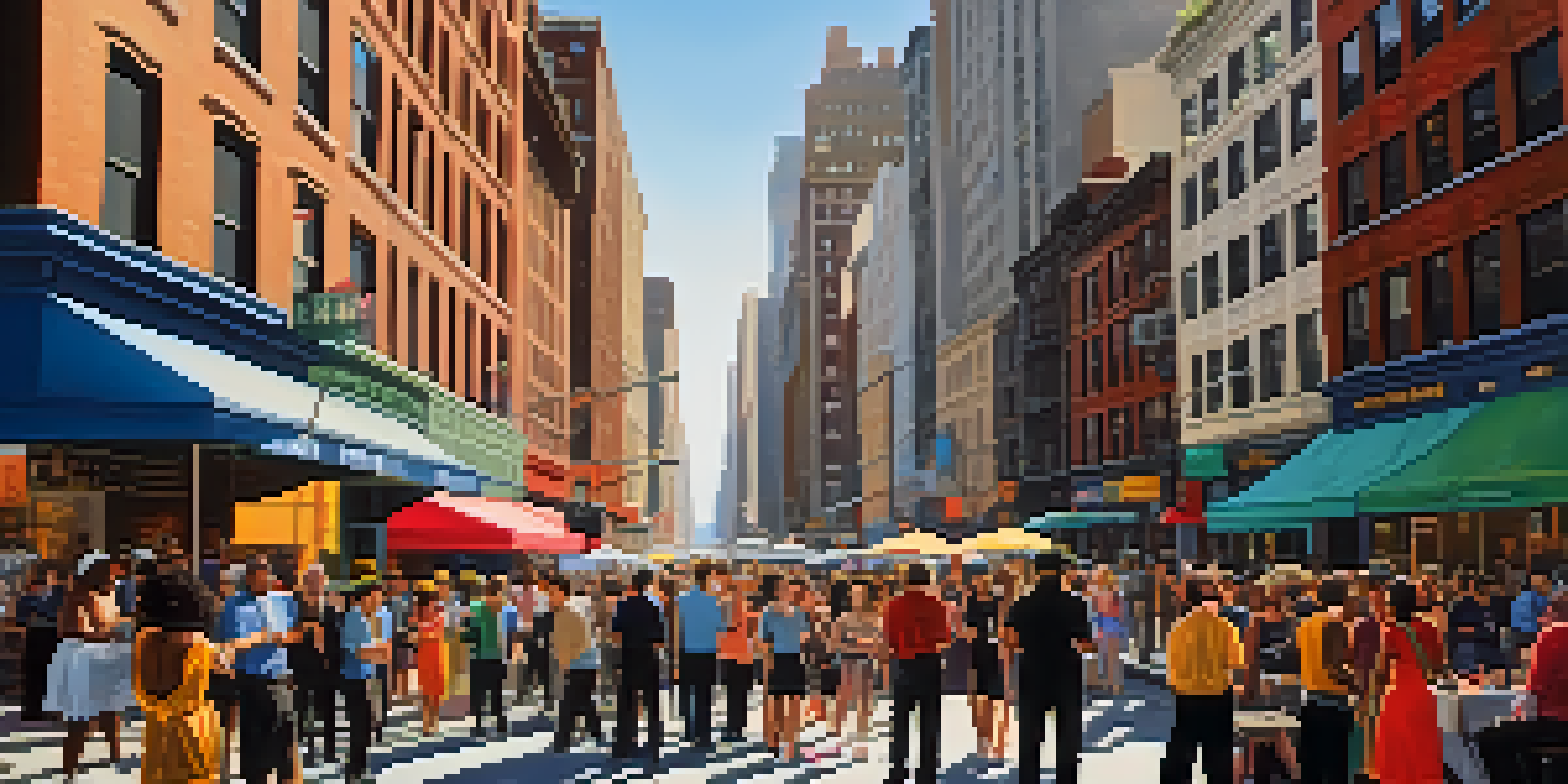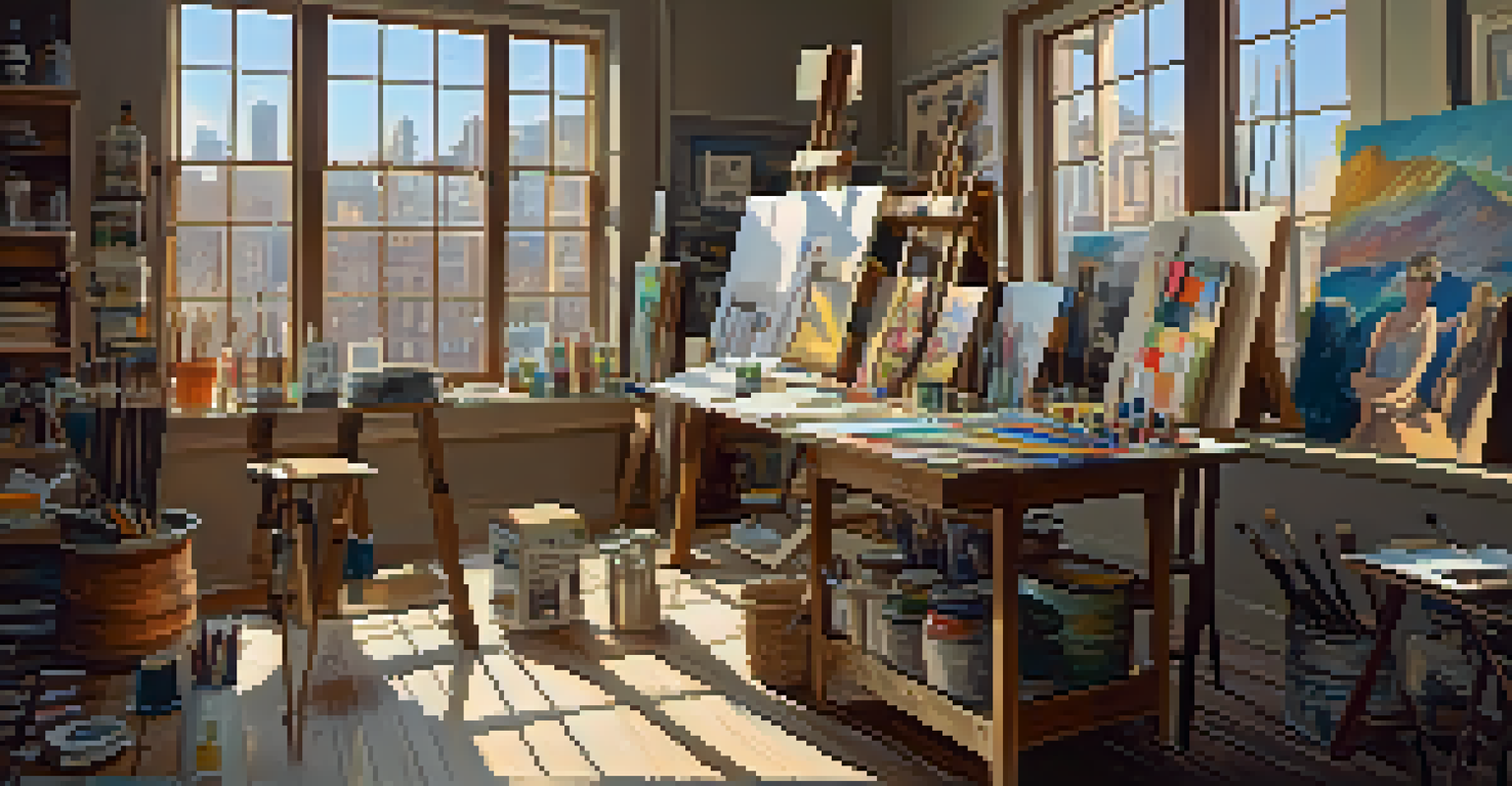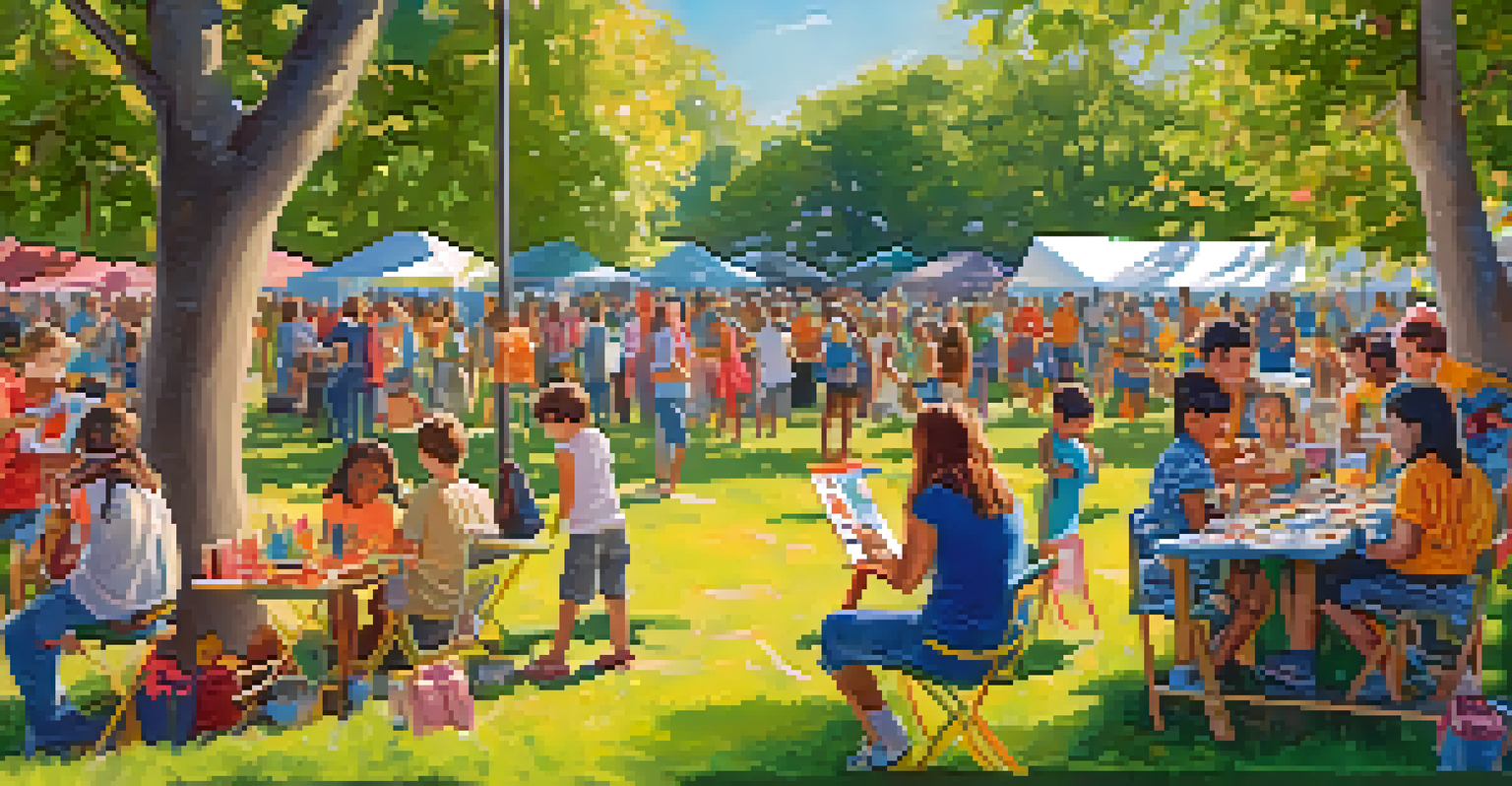The Creative Economy: A Key Player in NYC's Recovery Post-COVID

Understanding the Creative Economy and Its Importance
The creative economy encompasses industries like arts, design, media, and technology, all working together to foster innovation and cultural expression. In a city like New York, these sectors are not just vibrant; they are essential to its identity and economic health. As we look to rebuild after the pandemic, understanding how these industries contribute to the overall economy is crucial.
Creativity is intelligence having fun.
By investing in creativity, cities can boost job creation, stimulate local businesses, and enhance community engagement. This is particularly relevant in NYC, where the pulse of creativity influences everything from tourism to education. The creative economy acts as a catalyst, driving growth in other sectors and making the city more resilient in the face of challenges.
Moreover, the blend of creativity and entrepreneurship can lead to groundbreaking solutions for current problems, such as mental health and social inequality. As the city embraces its artistic roots, the creative economy can pave the way for a more equitable and dynamic recovery.
The Impact of COVID-19 on NYC's Creative Sectors
The COVID-19 pandemic brought unprecedented challenges to New York City's creative sectors, with theaters closing, galleries shutting down, and artists struggling to find venues for their work. This sudden halt not only impacted individual artists but also the broader ecosystem that relies on creativity for its economic vitality. Many creative professionals faced job losses and financial uncertainty, leading to a cultural crisis.

Yet, amidst the turmoil, the pandemic also sparked innovation within these sectors. Artists began to explore new mediums, such as virtual performances and online exhibitions, demonstrating resilience and adaptability. This shift not only kept the creative spirit alive but also opened new avenues for reaching audiences far beyond the city's borders.
Creative Economy Drives Recovery
Investing in the creative economy can boost job creation, stimulate local businesses, and enhance community engagement, vital for NYC's post-pandemic recovery.
As we move forward, it’s important to recognize both the struggles and the triumphs of these sectors during the pandemic. By leveraging the lessons learned, NYC can emerge stronger, ensuring that its creative economy is equipped to thrive in a post-COVID world.
Rebuilding Through Investment in Creative Industries
Investment in creative industries is critical for NYC's recovery. By channeling funds into arts programs, cultural institutions, and creative startups, the city can reignite its economy. This investment not only creates jobs but also attracts tourists and residents alike, revitalizing neighborhoods that have been hit hard by the pandemic.
The arts are not a luxury; they are a necessity for human existence.
Local governments, along with private organizations, are beginning to recognize the importance of this investment. Initiatives to support artists and creative entrepreneurs are emerging, providing crucial resources and platforms for new ideas. Such support is essential for fostering a robust creative ecosystem that can adapt to future challenges.
Furthermore, these investments can enhance the city's cultural offerings, making NYC a more vibrant place to live and work. By prioritizing the arts and creative sectors, the city can cultivate a sense of community and belonging that is vital for long-term recovery.
The Role of Technology in the Creative Economy
Technology plays a pivotal role in shaping the future of the creative economy. From digital art platforms to virtual reality experiences, tech innovations are transforming how creativity is expressed and consumed. This intersection of creativity and technology not only enhances artistic expression but also provides new business opportunities for creative professionals.
As NYC continues to recover, embracing technology will be key in revitalizing its creative sectors. By harnessing digital tools, artists and creators can reach wider audiences, collaborate more effectively, and streamline their processes. This adaptability is essential in a world where flexibility and innovation are paramount.
Technology Transforms Creativity
The integration of technology in the creative sectors enhances artistic expression and opens new business opportunities for artists and creators.
Moreover, technology can help bridge gaps in accessibility, ensuring that everyone has a chance to engage with the arts. As the creative economy evolves, the integration of technology will be a driving force in shaping a more inclusive and dynamic artistic landscape.
Fostering Community Through Creative Collaborations
Creative collaborations have the power to unite diverse communities and foster a sense of belonging. In the aftermath of COVID-19, these collaborations can play a crucial role in healing and rebuilding social connections. By bringing together artists, organizations, and local businesses, NYC can create vibrant projects that reflect the city's rich cultural tapestry.
Community art initiatives, workshops, and public performances not only celebrate local talent but also encourage participation from residents. These events can serve as a platform for dialogue, helping to address social issues and promote inclusivity. In a city known for its diversity, fostering collaboration is essential for nurturing a sense of shared identity.
As we look ahead, the emphasis on community-driven projects can lead to more sustainable and impactful creative ventures. By prioritizing collaboration, NYC can harness the collective power of its citizens to drive positive change and recovery.
Revitalizing Neighborhoods with Creative Spaces
Creative spaces, such as galleries, studios, and performance venues, are vital for the revitalization of NYC's neighborhoods. These spaces not only provide platforms for artists to showcase their work but also serve as community hubs where people can connect and collaborate. As the city recovers, investing in these creative spaces can breathe new life into local economies.
By transforming underutilized areas into vibrant cultural districts, NYC can attract both residents and tourists. This revitalization can lead to increased foot traffic, supporting local businesses and creating jobs in the process. Moreover, these spaces can foster collaboration between artists and entrepreneurs, resulting in innovative projects that benefit the entire community.
Community Collaborations Foster Unity
Creative collaborations can unite diverse communities and promote inclusivity, essential for rebuilding social connections after the challenges of COVID-19.
As we continue to navigate the post-COVID landscape, prioritizing the development of creative spaces will be essential. These hubs will not only enhance the city’s cultural offerings but also contribute to a more resilient and interconnected urban environment.
Looking Ahead: The Future of NYC's Creative Economy
The future of NYC's creative economy is bright, filled with opportunities for growth and innovation. As the city rebuilds, a renewed focus on creativity will be crucial for shaping a resilient and sustainable economy. The experiences gained during the pandemic can inform a more adaptable approach to artistic expression and collaboration.
As we embrace the lessons learned, it’s essential to foster an environment where creativity can flourish. Supporting emerging artists, encouraging interdisciplinary projects, and investing in creative education will be key in this endeavor. By nurturing talent and innovation, NYC can solidify its position as a global hub for creativity.

Ultimately, the creative economy will play a significant role in not just the city's recovery, but also its future identity. By prioritizing creativity, NYC can thrive and inspire generations to come, proving that art and innovation are at the heart of urban life.